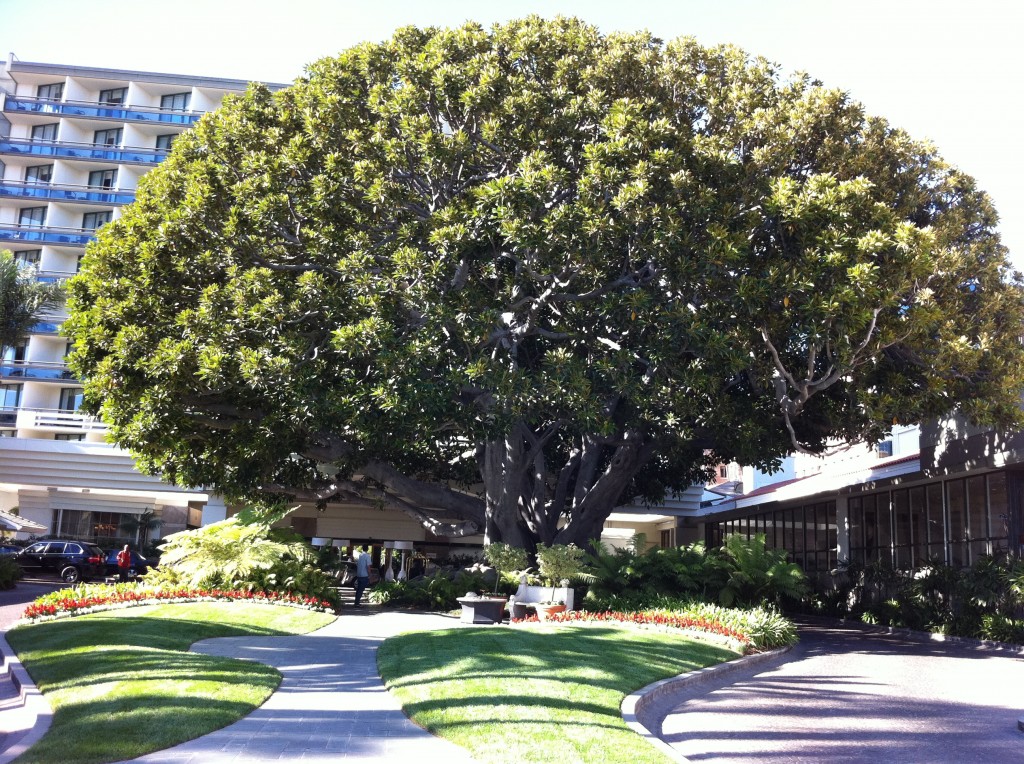We live in a beautiful Mediterranean climate. Southern California is actually one of only five regions in the world with this climate – cool, wet winters and warm to hot, dry summers. But of those five, ours is the driest. Fortunately, our native plants have evolved to thrive here; they expect to get their moisture for the entire year from late fall to early spring.
Except not this year. This is the driest year on record, and even our native trees and shrubs are dying in the wild lands.
So how do we keep our trees alive?
Water. All plants, from the trees that shade us to the vegetables we grow in our backyards are going to need more water this hot winter to make up for the absence of rain.
But there’s a drought, you say! We know, and, yes, all of us can and should be cutting our water consumption. But we should also be sharing some of the water we conserve with our trees. Healthy trees are crucial to maintaining sufficient local water supply in our communities, because when it does rain, a mature tree can capture thousands of gallons of rainwater in its canopy and root zone, sinking that rain into the aquifer.
But how much water do our trees need and how often should we be watering them?
That will depend on the specific plant and how long it has been in the ground. It also depends on the type of soil (sand, clay, silt, loam) and how well it drains. Soils with higher clay content and compacted soils will take longer to wet and stay wet longer. Sandier soils will drain faster, thus needing more water, more often.
With that in mind, here are some general watering guidelines:
– Trees want a good long drink but not every day. A newly planted tree will need A LOT more water than one that was planted six years ago. New trees need about fifteen to twenty gallons of water once or twice a week their first month in the ground and often all the way through their first summer.
– To determine whether or not a tree needs water, dig down at least four inches and check for moisture. Remember, the surface will dry out much faster. If the soil below ground is still very wet, water less often. Since every soil’s composition and drainage can be different (even on the same property), you really need to check the soil before pouring the water.
– Mature trees will need some watering this winter, too, even if they’re California natives. But water them less frequently, perhaps just once a month. Keep in mind that you’re only trying to replace the rain water that would have fallen in an average year. Here in Los Angeles, that’s about twelve inches. For mature trees, you should be watering about nine inches from the trunk out to the edge of the farthest branches (the drip line). This is where the majority of the feeder roots are.
– Mulch till you drop! Bare soil in southern California really doesn’t make any sense. With a four inch layer of wood chips covering the soil, you’ll slow the water’s evaporation, keep the weeds down, prevent a hard crust from forming on the soil surface, cool the root zone, and create a healthier environment for the beneficial microorganisms in the soil.
Overwhelmed? Let’s keep it simple. Just remember this: during a drought, water more. When the soil is dry and dusty, water!
What else can we do to help combat the drought?

